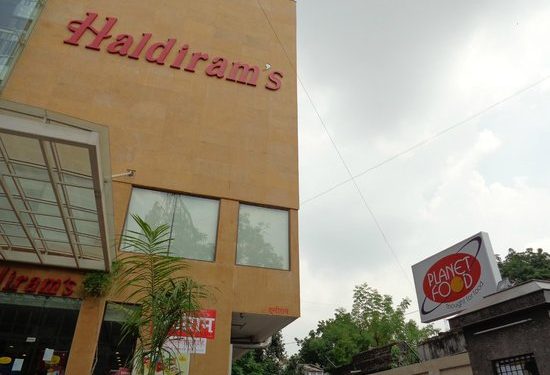For decades, Haldiram’s has been synonymous with authentic Indian flavors — from crunchy namkeens to delicious mithai (sweets). What started as a humble sweets and snacks shop in Bikaner, Rajasthan, in 1937 has now grown into one of India’s largest and most respected food brands. Today, Haldiram’s is not just a household name in India but also a global ambassador of Indian cuisine, with a strong and growing presence in the United States.
The Journey from Bikaner to the USA
The Haldiram story began with Ganga Bhishen Agarwal, lovingly known as Haldiram Ji, who redefined the art of making bhujia — a spicy fried snack made from gram flour. His innovative approach and commitment to quality transformed a local delicacy into a global brand. Over time, Haldiram’s expanded beyond its origins, setting up large-scale production facilities in Nagpur, Delhi, and Kolkata, and later venturing into international markets including the Middle East, the UK, and the USA.
For the Indian diaspora living abroad, Haldiram’s products became more than just snacks; they became a nostalgic connection to home. Recognizing this emotional and cultural connection, Haldiram’s began exporting its signature items to the United States in the early 2000s. The initial demand came primarily from Indian communities craving authentic Indian flavors, but the brand quickly gained popularity among Americans looking to explore international cuisines.
What Haldiram’s Offers in the U.S.
In the United States, Haldiram’s offers a wide range of products that reflect the diversity of Indian culinary traditions. These include:
- Namkeens and Savory Snacks: Popular items such as Aloo Bhujia, Navratan Mix, Moong Dal, and All-In-One are among the best-selling snacks. They offer the perfect balance of spice, crunch, and nostalgia.
- Sweets and Desserts: Indian sweets like Rasgulla, Gulab Jamun, Kaju Katli, and Motichoor Ladoo are available in packaged, ready-to-serve forms that meet international food safety standards.
- Ready-to-Eat Meals: Haldiram’s has successfully tapped into the growing demand for convenient and authentic Indian meals in the U.S. Its range of ready-to-eat curries, rice dishes, and snacks—such as Pav Bhaji, Rajma Chawal, Palak Paneer, and Samosas—make it easier for people to enjoy Indian food without spending hours in the kitchen.
- Frozen Foods: To cater to the modern lifestyle, Haldiram’s USA also offers frozen snacks like Tandoori Naan, Parathas, Paneer Tikka, and other microwave-ready delicacies.
These products are available in Indian grocery stores across the U.S. and on major online platforms like Amazon, Walmart, and Instacart, making it simple for consumers to access them nationwide.
Quality, Authenticity, and Global Standards
A major reason for Haldiram’s success in the U.S. is its commitment to maintaining quality and authenticity. Each product exported to the U.S. complies with FDA regulations and international packaging and labeling standards. Haldiram’s uses high-grade ingredients, hygienic manufacturing processes, and advanced technology to ensure that its snacks and sweets taste just as fresh and flavorful as those made in India.
The company also pays close attention to evolving consumer preferences. For example, in response to the growing number of health-conscious customers, Haldiram’s has introduced products that are baked instead of fried, as well as options with reduced salt and oil content. Moreover, many of its products are vegetarian, which appeals not only to Indian consumers but also to Americans seeking plant-based snack options.
The Cultural Connection
For millions of Indians living in the United States, Haldiram’s is more than a food brand — it’s a reminder of home. The taste of bhujia or a bite of soan papdi instantly transports people back to childhood memories of festivals, family gatherings, and celebrations. Haldiram’s has become a cultural bridge, connecting generations of Indians to their roots while introducing authentic Indian flavors to a global audience.
The brand has also found a growing audience among Americans who are increasingly interested in global cuisines. With Indian food becoming mainstream in the U.S., Haldiram’s products are now enjoyed by a diverse group of consumers who appreciate bold flavors and exotic ingredients.
Overcoming Challenges and Building Trust
Like any global brand, Haldiram’s has faced challenges in maintaining consistent quality across borders and adapting to foreign regulations. At times, there have been rumors about its products being banned or restricted in the U.S. due to food safety concerns. However, these claims were proven false. Haldiram’s has always emphasized transparency and compliance, working closely with regulatory bodies to ensure that all exports meet strict international standards.
The brand’s ability to adapt and innovate has helped it overcome these obstacles. By investing in research, technology, and local partnerships, Haldiram’s continues to strengthen its foothold in the competitive U.S. snack market.
The Future of Haldiram’s in the USA
The company is exploring possibilities such as localized product variations — for example, milder spice levels for American palates or new fusion snacks that blend Indian and Western flavors.
Additionally, the growing trend of multicultural dining and global snacking presents a unique opportunity for Haldiram’s to become a mainstream brand beyond the Indian diaspora. With its unmatched authenticity, innovation, and cultural resonance, Haldiram’s is well-positioned to continue being a leader in bringing the taste of India to American homes.
Conclusion
From its modest beginnings in Bikaner to becoming a global brand, Haldiram’s journey reflects the power of tradition, quality, and innovation. In the United States, Haldiram’s is more than just a food brand—it’s a celebration of Indian culture and a bridge between East and West. Whether it’s a packet of Aloo Bhujia or a box of Rasgulla, every bite tells the story of India’s rich culinary heritage.












































